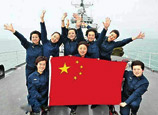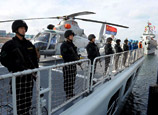
In recent years, as China replaced Japan as the second largest trading country in the world, and became the second largest industrial manufacturing country in the world after the United States, its international status as the "world factory" is gradually solidified.
However, compared with 10 years ago, China's labor cost advantage has significantly weakened. Part of the manufacturing industry is shifting to Southeast Asia. Coupled with accelerated process of "re-industrialization" in developed countries, China's manufacturing industry is faced with new challenges. In this regard, People's Daily Online interviewed the Director of the Institute of Economics of the Chinese Academy of Social Sciences Pei Changhong.
Vietnam has replaced China as largest producer of Nike shoes
Q: What new challenges will China's manufacturing industry be facing as economic development in developing countries accelerate and labor-intensive industries shift to the Southeast Asian countries?
Pei: Compared with some neighboring countries, China's traditional comparative advantage of low labor costs is gradually subsided. According to data of the Economist Intelligence Unit (EIU), labor costs in China have a substantial increase of nearly four times in the recent 10 years. The labor cost per unit hour increased from 0.6 U.S. dollar in 2000 to 2.9 U.S. dollars in 2011, a rate equivalent to 1.5 times that of Thailand, 2.5 times that of the Philippines, and 3.5 times that of Indonesia. Resource costs represented by land also rose sharply. In late 2011, the overall level of land price of the nation's major monitored urban area was 3,049 yuan per square meter, which is 2.4 times of the price at the end of 2005.
In this context, two new trends have emerged in the flow of world manufacturing industry.
First, part of the manufacturing industry is flowing back to the United States under its high-profile advocacy of "re-industrialization", "revival of the manufacturing sector", and other policy objectives; second, some sectors of the world's manufacturing industry are shifting to some ASEAN countries with cheaper labor costs.
For example, over 40 percent of Nike shoes were produced in China in 2000 and Vietnam produced only 13 percent. In 2009, both sides yielded 36 percent equally. By 2010, Vietnam had replaced China and become the world's largest producer of Nike shoes.
As wages and production costs in China continue rising, the competitiveness of the manufacturing sector in ASEAN countries continue to strengthen. More international capital flows to Southeast Asia. According to the "World Investment Report 2012", the flow of foreign direct investment to Southeast Asia in 2011 was 117 billion U.S. dollars, increasing by 26 percent over the previous year; while China's growth rate over the same period was only 8 percent.
China still dominates in terms of gross human resource
Q: Will the "re-industrialization" in developed countries affect China industry? Will China's status as "world factory" be replaced by other countries in a short time?
Pei: The phenomenon is indeed there that the manufacturing sector is partly back flowing to the United States. But in general this only occurs in high-end technical aspects of the high-end industries.
Because of the constantly decreasing incentives for low-income families to receive education, the overall level of human capital in the United States shows a downward trend, which makes its industrial structure and labor market show characteristics of expansion at both high and low ends while atrophy in the intermediate levels.
Because of the shortcomings of the medium-skilled labor, it is hardly possible for the United States to accept large scale backflow of the majority of production processes of the manufacturing industry.
Other developing countries do not seem to have conditions to become the "world factory". First, no country is likely to have the capacity to undertake such large-scale transfer. Second, the continuously improved quality of the labor force in China is becoming its new economic competition advantage.
In terms of gross human resources, China will still have an absolute advantage in the next 10 years. Especially, the labor costs in the central and western regions will remain relatively lower than the level of the eastern region in a period of time. There are still potentials of labor supply to be tapped. The advantages endowed by traditional labor factors will last for a period of time in central and western China. Therefore, a certain share of labor-intensive manufacturing industry will be transferred to other developing countries, but China's "world factory" status as the manufacturer of such products cannot be replaced.
Read the Chinese version at: 中国“世界工厂”仍具10年优势, Source: People's Daily
















 Auto-chat app sparks social skills concern: A littile yellow chicken can talk, really?
Auto-chat app sparks social skills concern: A littile yellow chicken can talk, really?


![]()
